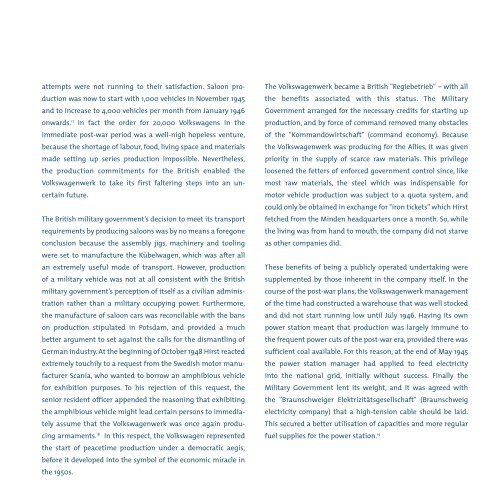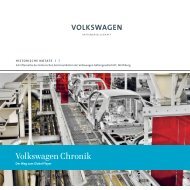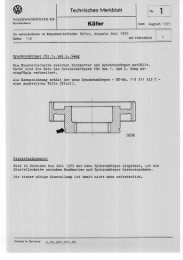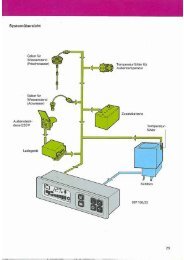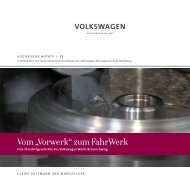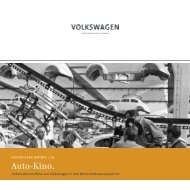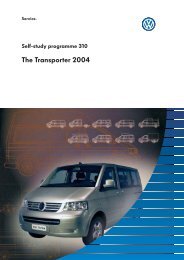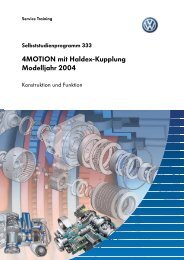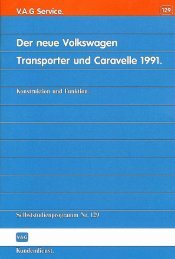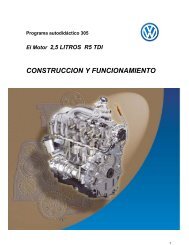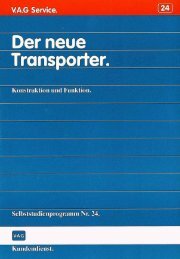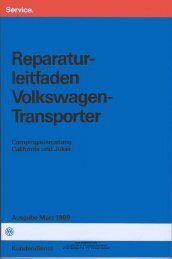HN 2: The British and their Works
HN 2: The British and their Works
HN 2: The British and their Works
You also want an ePaper? Increase the reach of your titles
YUMPU automatically turns print PDFs into web optimized ePapers that Google loves.
attempts were not running to <strong>their</strong> satisfaction. Saloon production<br />
was now to start with 1,000 vehicles in November 1945<br />
<strong>and</strong> to increase to 4,000 vehicles per month from January 1946<br />
onwards. 17 In fact the order for 20,000 Volkswagens in the<br />
immediate post-war period was a well-nigh hopeless venture,<br />
because the shortage of labour, food, living space <strong>and</strong> materials<br />
made setting up series production impossible. Nevertheless,<br />
the production commitments for the <strong>British</strong> enabled the<br />
Volkswagenwerk to take its first faltering steps into an uncertain<br />
future.<br />
<strong>The</strong> <strong>British</strong> military government’s decision to meet its transport<br />
requirements by producing saloons was by no means a foregone<br />
conclusion because the assembly jigs, machinery <strong>and</strong> tooling<br />
were set to manufacture the Kübelwagen, which was after all<br />
an extremely useful mode of transport. However, production<br />
of a military vehicle was not at all consistent with the <strong>British</strong><br />
military government’s perception of itself as a civilian administration<br />
rather than a military occupying power. Furthermore,<br />
the manufacture of saloon cars was reconcilable with the bans<br />
on production stipulated in Potsdam, <strong>and</strong> provided a much<br />
better argument to set against the calls for the dismantling of<br />
German industry. At the beginning of October 1948 Hirst reacted<br />
extremely touchily to a request from the Swedish motor manufacturer<br />
Scania, who wanted to borrow an amphibious vehicle<br />
for exhibition purposes. To his rejection of this request, the<br />
senior resident officer appended the reasoning that exhibiting<br />
the amphibious vehicle might lead certain persons to immediately<br />
assume that the Volkswagenwerk was once again producing<br />
armaments. 18 In this respect, the Volkswagen represented<br />
the start of peacetime production under a democratic aegis,<br />
before it developed into the symbol of the economic miracle in<br />
the 1950s.<br />
<strong>The</strong> Volkswagenwerk became a <strong>British</strong> "Regiebetrieb" – with all<br />
the benefits associated with this status. <strong>The</strong> Military<br />
Government arranged for the necessary credits for starting up<br />
production, <strong>and</strong> by force of comm<strong>and</strong> removed many obstacles<br />
of the "Komm<strong>and</strong>owirtschaft" (comm<strong>and</strong> economy). Because<br />
the Volkswagenwerk was producing for the Allies, it was given<br />
priority in the supply of scarce raw materials. This privilege<br />
loosened the fetters of enforced government control since, like<br />
most raw materials, the steel which was indispensable for<br />
motor vehicle production was subject to a quota system, <strong>and</strong><br />
could only be obtained in exchange for "iron tickets" which Hirst<br />
fetched from the Minden headquarters once a month. So, while<br />
the living was from h<strong>and</strong> to mouth, the company did not starve<br />
as other companies did.<br />
<strong>The</strong>se benefits of being a publicly operated undertaking were<br />
supplemented by those inherent in the company itself. In the<br />
course of the post-war plans, the Volkswagenwerk management<br />
of the time had constructed a warehouse that was well stocked<br />
<strong>and</strong> did not start running low until July 1946. Having its own<br />
power station meant that production was largely immune to<br />
the frequent power cuts of the post-war era, provided there was<br />
sufficient coal available. For this reason, at the end of May 1945<br />
the power station manager had applied to feed electricity<br />
into the national grid, initially without success. Finally the<br />
Military Government lent its weight, <strong>and</strong> it was agreed with<br />
the "Braunschweiger Elektrizitätsgesellschaft" (Braunschweig<br />
electricity company) that a high-tension cable should be laid.<br />
This secured a better utilisation of capacities <strong>and</strong> more regular<br />
fuel supplies for the power station. 19


